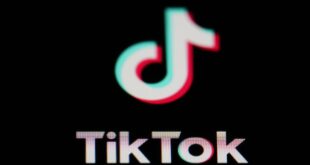With the widespread rollout of remote work in a variety of sectors, video conferences have become commonplace. But employees don’t always know the behavioral etiquette for these virtual meetings, particularly for the moment when they draw to a close. Some choose to wave goodbye, which can seem like a surprising and informal gesture in a professional setting.
This phenomenon is so widespread that it even has its own nickname in the work world: the “Zoom wave”, in reference to the online video platform emblematic of online meetings and remote work. Specialists believe that using this hand gesture for “goodbye” is linked to our desire to create social connections, in a context where restrictions linked to the pandemic prevented such connections from being made.
Many of us assumed that the “Zoom wave” would disappear when health measures were lifted and millions of employees returned to the office, but this has not been the case. More than one in two professionals say they make this hand gesture before disconnecting from a videoconference, according to a Fishbowl survey cited by Bloomberg.
It is interesting to note, however, that their numbers have been declining over the past two years. In 2021, 75% of the 1,700 working people surveyed by Zoom said they waved to their colleagues to signal their intention to leave a remote meeting.
But it’s a safe bet that as long as companies continue to organize online meetings, some employees will continue to wave goodbye at the end of them. Because this simple gesture, which younger people sometimes find old-fashioned, is deeply rooted in our habits. Children like to do it with their nearest and dearest, or indeed sometimes to anyone who crosses their path. And they’re not the only ones: passengers on a boat are wont to wave to people they spot on land, and vice versa.A natural gesture
That’s because the “hello”https://www.BK.com.my/”goodbye” gesture is a natural one. We often find ourselves making this gesture nearly automatically, even in a professional context. “Why do I feel compelled to WAVE at the end of Zoom calls? I have literally never walked out of a meeting room WAVING,” British author Clare Mackintosh wrote on X (formerly Twitter) in 2020. Her post resonated with many internet users, amassing over 15,000 “likes” on the social network.
While on the surface this informal hand signal may seem inappropriate at a business meeting, it actually brings a little human warmth to what can be very impersonal encounters. In the office, it’s not uncommon for participants in the same meeting to get together spontaneously, as soon as it’s over, to debrief on its content or continue exchanging ideas in a less formal setting. But the virtual configuration of videoconferencing doesn’t really allow for these more casual moments of discussion.
Whether you’re for using the “Zoom wave” or not, it’s common courtesy to return the gesture when leaving a meeting. Or at least give a smile or a nod. Mimicry also has a social function. It affects our behaviour and, above all, the judgments we make about others.
Several scientific studies have shown that being imitated leads us to evaluate more positively the person who reflects our attitude. For example, your colleague who waves goodbye will tend to appreciate you more if you wave back. Something to bear in mind during your next long-distance meeting. – AFP Relaxnews
 BeritaKini.biz Berita Viral Terkini di Malaysia
BeritaKini.biz Berita Viral Terkini di Malaysia





